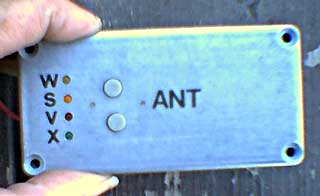
| Skookum VHF Antenna Switch | ||
 |
| Finally I have found
a use for a bunch of DIP-style RF relays I acquired in a grab-bag from a
discount electronics shop some time ago. These babies are sealed totally,
and rf shielded with low contact capacitance. Perfect for VHF frequencies.
They are 12 volt and have a fairly decent coil resistance, although I wish
they were latching style. I have several purchased antenna switches but they are all the same. Every few months they need to be pulled apart and cleaned as the contacts oxidize quickly. Perhaps there are better ones out there but frankly I'm sick and tired of looking by "buying and trying." |
|
| The solution of using relays isn't
without it's draw backs, i.e. power consumption, but it's minimal and can be
turned into low draw mode by selecting no relay. As can be seen on the right side of the schematic, the 4 outputs are all VHF related. As the antenna will be 1/4 wave, SWR won't be a problem and the EXT can be used for TV signals. |
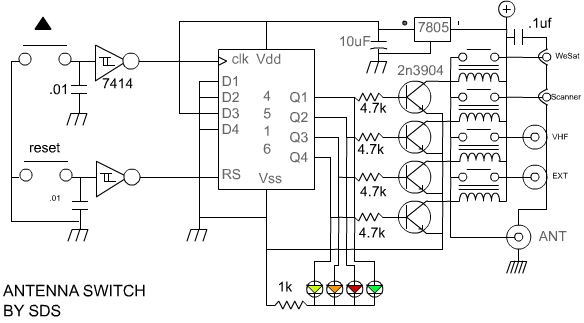 |
| This
Circuit description:
|
|
| <I thought of adding an RF sensor,
but by the time it kicks in the preset, the rest of the stuff would be
cooked so wouldn't matter. A line off the radios /TX output may be suitable
as the transition to RF is not immediate. I'll be thinking about that one.> The 7414 gates are Schmidt triggers, famous for their ability to debounce switches. Once the zero crossing has occurred as button is pressed, it must be a certain voltage above that to flip back to it's original state. The caps are to ensure the slope is smooth. The clock input is pulsed with each press of the switch which increments it by one. I intentionally place the trace for the scanner output along the antenna so it can "scan" off of the air capacitance without being actually turned on. ( This is just because I'm nosey! Also good for scanning vessels in close proximity ) |
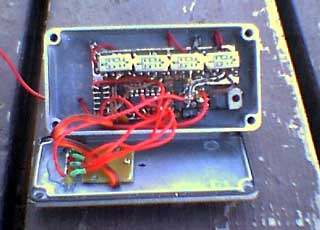 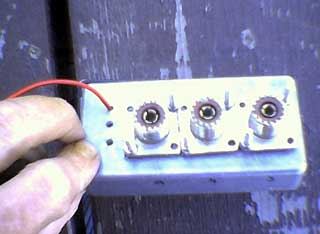 |
| A neat thing about this box is
that it's totally sealed. I can submerse it in water and not leaks! As
shown in this photo the switches are "stolen" conductive rubber contact
style from a telephone. I went with round because they are easy to drill
for. The small pc board is held on with tiny screws that compress the rubber
to the aluminum. I just hand etched the contact "teeth" and it works fine! April 30th 2007 |
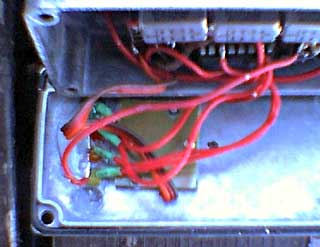 |